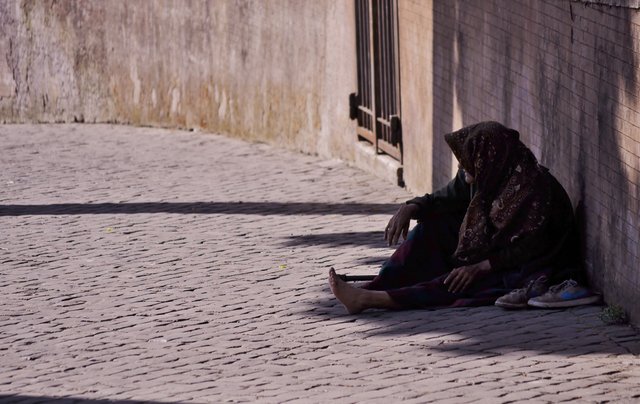Current Social Issues: Homelessness
Homelessness
Stable housing is a basic human need that is often taken for granted. It is presumed that if a person works hard enough then housing will be inevitable. Sadly, this is far from the cold hard reality known as homelessness. Homelessness as defined by Housing and Urban Development (HUD) is, “People who are living in a place not meant for human habitation, in emergency shelters, in transitional housing or are exiting an institution where they temporarily resided. People who are losing their primary nighttime residence, which may include a motel or hotel or a doubled-up situation, within 14 days and lack resources or support networks to remain in housing. Families with children or unaccompanied youth who are unstably housed and likely to continue in that state. People who are fleeing or attempting to flee domestic violence, have no other residence, and lack the resources or support networks to obtain other permanent housing.” (HUD). With such a broad definition, it’s no wonder that our country and more particularly our state is facing a homeless epidemic.

The Westword published an article in December of 2016 debunking several myths that surround the homeless population in Colorado. One of the most poignant myths was that most homeless people are homeless because they chose to consume marijuana over maintaining permanent housing. (Walker) Although there is certainly marijuana use among some homeless individuals, it is not a defining factor to why our homeless population is so high. According to the article, the primary explanations for homelessness in Denver are high rent, lack of jobs, and mental health issues. (Walker) The other myths that are disputed in the article are, “Most people who are homeless are so because it’s their fault.” (Walker) This myth is tied to the old Puritan belief that if one works hard enough, they will be able to provide or their basic human needs. “Most of the homeless are single men living on the street.” (Walker) This myth makes the situation of homelessness a bit less harsh for many people. If it is accepted that many homeless people are families then society would feel more compelled to take a stand against the epidemic. “Most of the homeless aren’t looking for jobs.” (Walker) The article explained that “Homeless individuals without fixed addresses or stable living conditions face significant challenges in securing and maintaining jobs. Many homeless individuals who seek employment also lack transferable job skills or a consistent work history and are often overlooked in this highly competitive employment market.” (Walker) Roughly 0ne third of Denver’s homeless population currently are employed. “Providing taxpayer-supported housing to the homeless is pointless.” (Walker) This myth leads us back to the Puritan belief and that if housing is publicly supported then the homeless individual will remain drunk and continue using drugs. This also makes the grand assumption that all the homeless population is currently using a substance that is deemed socially inappropriate for someone who is homeless; i.e.: street drugs and alcohol.

As we relate the homeless epidemic in Denver to sociological theory, it can be enlightened by any of the three major theories; Structural Functionalism, Conflict theory, and Symbolic Interactionism. Structural Functionalism says, “We must consider how various social phenomena function, or work in a positive way, to maintain unity and order in society.” Conflict Theory “Focuses on dissent, coercion, and antagonism in society.” And finally, Symbolic Interactionism is the “Perspective that sees society as the product of symbols (words, gestures, objects) given meaning by people in their interactions with others.”
Structural Functionalism would tell us that homeless is a needed subculture of our society. Based on this theory, homelessness provides a benefit to society as a whole. Because of the homelessness epidemic, there has been great philanthropic growth which has provided numerous jobs to many others within our society. Our homeless population gives others the jobs they need to be productive in society. This theory relies heavily on the theorist Talcott Parsons and the question he poses in the text of who actually benefits from the functionality of the theory. In this case it is a matter of social class that benefits. The middle and upper-class members of society will benefit at the detriment of the poor. Dysfunction is what happens according to the Puritan belief in hard work pays rewards. If your unable to work “hard enough” then you will suffer the consequences of inadequate housing.
Conflict Theory is quite the opposite of Structural Functionalism. Karl Marx believed that capitalism was a large factor in many social issues. Capitalism is “The economic system that includes the ownership of private property, the making of financial profit, and the hiring of workers.” This would tell us then that one of the results of capitalism is a poor class. A class of society, such as the homeless, that will not be able to benefit from the capitalist belief or value. The rich of society, according to Marx, control the ability of the society to make financial gains. Because of this, the rich get to decide who is a member of their class and the subsequent middle and lower classes and if and how they will move through those established classes.
Symbolic Interactionism originated with the ideas of George Herbert Mead. Mead was curious as to how and why humans assigned meaning to symbols “(Objects that represent something else)” With Symbolic Interactionism, we assign a meaning and a value to words and objects. So, within this theory, it could be argued that a home is just an object that society has put a meaning and a value on that may not exist for everyone. In this theory we see the emergence of such sayings as homeless people “want” to be homeless or “home is where the heart is”. The structure itself is not the home, but rather the value that you give your dwelling, whether that be a mansion or a tent under a bridge, is solely based on the value and the meaning that it is given.
Homelessness in evident in most civilized societies in the world today. It goes without saying that it needs to at least be addressed as a social issue. Understanding the causes and the Sociological theories behind the issue may lead society in a direction to find a solution that is viable to the greater good of all people.
Works Cited:
United States Department of Housing and Urban Development. (2012). New Guidelines for Defining Homelessness in America.
Walker, C. (2016, December 4). Homeless in Denver: The Cold, Hard Facts Behind Six Myths.
Westord, Online.
Congratulations! This post has been upvoted from the communal account, @minnowsupport, by matthewtiii from the Minnow Support Project. It's a witness project run by aggroed, ausbitbank, teamsteem, theprophet0, someguy123, neoxian, followbtcnews/crimsonclad, and netuoso. The goal is to help Steemit grow by supporting Minnows and creating a social network. Please find us in the Peace, Abundance, and Liberty Network (PALnet) Discord Channel. It's a completely public and open space to all members of the Steemit community who voluntarily choose to be there.
Great work. I think the more people see this sort of thing, the more likely they are to help.